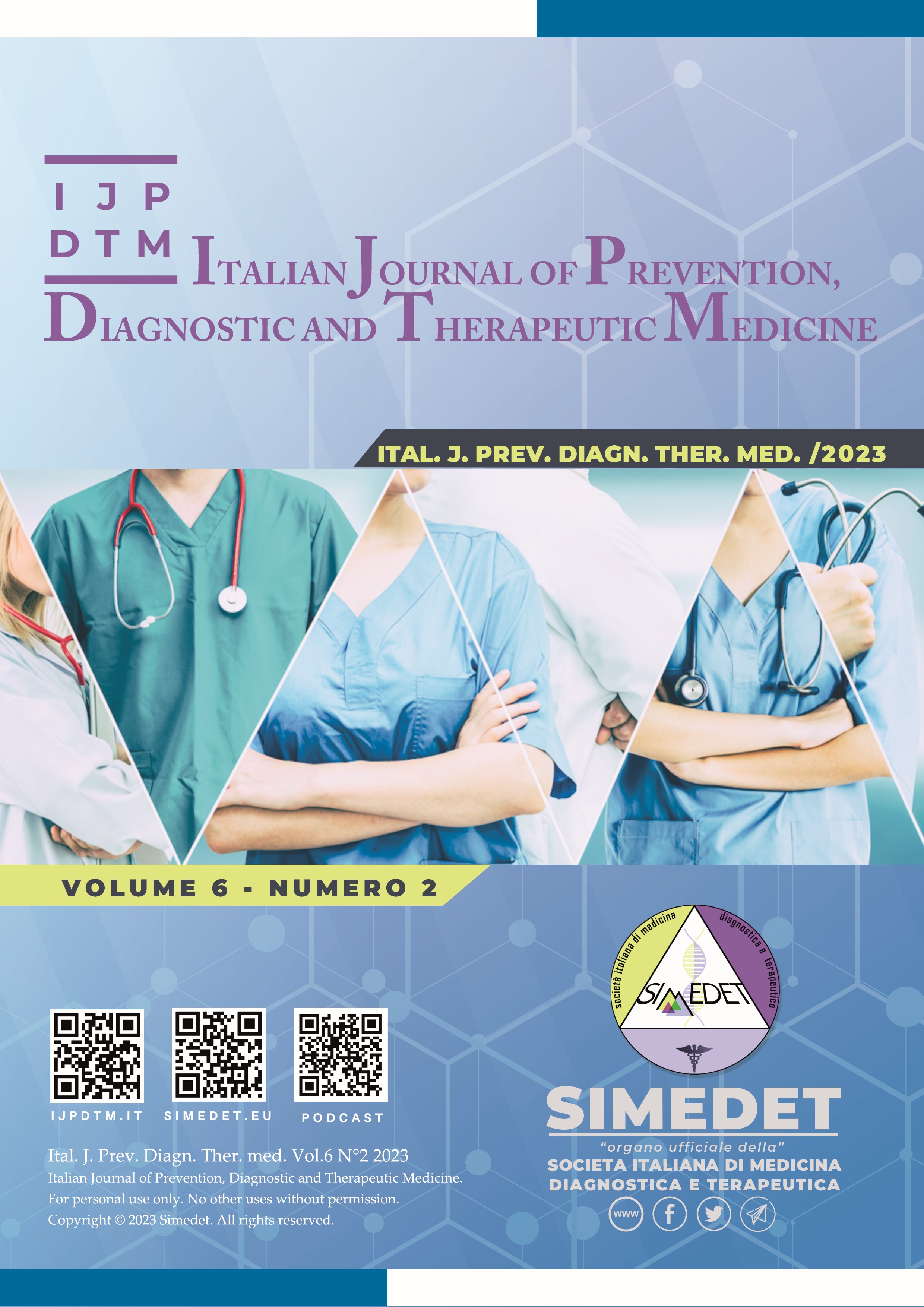Antiseptics and Disinfectants
Main Article Content
Abstract
The classification of antiseptics and disinfectants is regulated by the European standards UNI EN 14885/2019 which entered into force on 31 January 2019 which define the regulatory standards to which manufacturers must refer and the characteristics to which these products must comply for the registration of the specifications biocidal activity.
Downloads
Article Details

This work is licensed under a Creative Commons Attribution-NonCommercial-NoDerivatives 4.0 International License.
References
Morrison RT, Boyd N; Chimica Organica, 3° edizione, casa editrice Ambrosiana, Milano.
Sienko MJ, Plane RA: Chimica, Piccin Editore Padova Quarta Edizione .
Wade RG, Burr NE, McCauley G et el The Comparative efficacy of Chlorhexidine Gluconate and Povidone-iodine Antiseptics for the Prevention of Infection in Clean Surgery: A Systematic Review and Network Meta-analysis;2021 Ann Surg 1;274(6):481-488.
Ferretti GA, Brown AT, Raybould TP et al; Oral antimicrobial agents—chlorhexidine NCI Monogr. 1990;(9):51-5.
Gilmore M, Cole A, DeGrazia M; Evidence-based review of chlorhexidine gluconate and iodine in the preoperative skin preparation of young infants J Spec Pediatr Nurs 2022 Oct;27(4).
Vanzi V, Pitaro R; Skin Injuries and Chlorhexidine Gluconate-Based Antisepsis in Early Premature Infants: A Case Report and Review of the Literature J Perinat Neonatal Nurs 2018 Oct/Dec;32(4):341-350.
Coulter WA, Russell C Effect of chlorhexidine on plaque development in an artificial mouth. Microbios. 1976;16(63):21-8.
Seidelman JL, Mantyh CR, Anderson DJ; Surgical Site Infection Prevention: A Review JAMA, 2023 Jan 17;329(3):244-252.
F D D’Auria, G Simonetti, V Strippoli Antimicrobial activity exerted by sodium dichloroisocyanurate] Ann Ig 1989 1(6):1445-58.
Flynn J: Povidone-iodine as a topical antiseptic for treating and preventing wound infection: a literature review; Br J Community Nurs 2003 Jun;8(6 Suppl):36-42.
Wang Y, Wu Y, Wang Q, : Effetto virucida di povidone-iodio contro SARS-CoV-2 in vitro J Int Med . . Res 2021 Dicembre;49(12)
Seet RCS, Quek AML, Ooi DSQ; Positive impact of oral hydroxychloroquine and povidone-iodine throat spray for COVID-19 prophylaxis: An open-label randomized trial. Int J Infect Dis. 2021 May;106:314-322.
Stathis C, Victoria N, Loomis K Review of the use of nasal and oral antiseptics during a global pandemic.Future Microbiol. 2021 Jan;16(2):119-130.
Lim NA , Teng O, Yan Hao Ng C, Repurposing povidone-iodine to reduce the risk of SARS-CoV-2 infection and transmission: a narrative review. Ann Med 2 Dec;54(1);1488-1499.
Riad A,Yilmaz G, Boccuzzi M: Iodio molecolare Fr Dent J. 2020; 229(5): 265–266. Pubblicato online 2020 Sep 11.
Migneault I, Dartiguenave C, Bertrand M; “Glutaraldehyde: Behavior in aqueous solution, reaction with proteins, and application to enzyme crosslinking”2004; BioTechniques 37 (5): 790–802.
Tezel U, Pavlostathis SG; Quaternary ammonium disinfectants: microbial adaptation, degradation and ecology Curr Opin Biotechnol Curr Opin Biotechnol 2015 Jun;33:296-304.
Buffet-Bataillon S, Tattevin P, Bonnaure-Mallet M et al; Emergence of resistance to antibacterial agents: The role of quaternary ammonium compounds a critical review; Int J Antimicrob Agents 2012 May;39(5):381-9.
Hana Malenovska H: Coronavirus Persistence on a Plastic Carrier Under Refrigeration Conditions and Its Reduction Using Wet Wiping Technique, with Respect to Food Safety. Food and environmental virology (2020-10-16).
Cutts T, Kasloff S, Safronetz D et al: Decontamination of common healthcare facility surfaces contaminated with SARS-CoV-2 using peracetic acid dry fogging J Hosp Infect. 2021 Mar; 109: 82–87.

